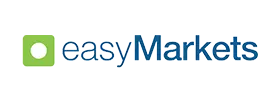High-leverage brokers enable their customers to gain greater market exposure by increasing their position size through leverage. The higher the leverage ratio, the less money a trader needs to open a large trade. Depending on the region and its regulatory framework, some forex brokers offer leverage as high as 1:500, allowing traders to control up to $500 for every dollar they put into the market. On this page, you will find a listing of the best brokers offering 1:500 leverage, along with detailed information about margin trading.

Below you can find a list of the best forex brokers offering 1:500 leverage:
Top 12 Forex Brokers with 1:500 leverage
-
Fusion Markets
- Australia regulated broker
- MT4, MT5, TradingView, Ctrader
- Leverage up to 500
Trading InstrumentsDeposit Methods- Commodities CFDs
- Crypto CFDs
- Forex CFDs
- Indices CFDs
- Metals CFDs
- Stock CFDs
-
XM Group
- XM provides great trading experiences using MetaTrader 4 and MetaTrader 5, which are improved by personalized features.
- Zero commission accounts are available
- Top-tier regulation from CySEC, ASIC, FSC, and DFSA oversee XM's operations, assuring transparency and client safety.
Trading InstrumentsDeposit Methods- Bonds CFDs
- Commodities CFDs
- Crypto CFDs
- Energy CFDs
- ETF CFDs
- Forex CFDs
- Forex Options
- Index Options
- Indices CFDs
- Metals CFDs
- Share CFDs
- Stock CFDs
- Stock Options
- US Stock Options
-
FP Markets
- Australia and CySEC regulated broker
- MT4/MT5, TradingView, Ctrader, Iress
- EUR/USD spread from 0.0 pips
Trading InstrumentsDeposit Methods- Commodities CFDs
- Crypto CFDs
- Energy CFDs
- Forex CFDs
- Indices CFDs
- Metals CFDs
- Stock CFDs
-
Global Prime
- Australia regulated broker
- Advanced MT4
- $0 Minimum Account Size
Trading InstrumentsDeposit Methods- Commodities CFDs
- Forex CFDs
- Indices CFDs
- Metals CFDs
-
Vantage FX
- Broker offering some of the lowest spreads from 0.0 pips
- Operating in multiple markets under licenses from tier-1 regulators
- Provides a range of account types with great trading conditions
Trading InstrumentsDeposit Methods- Commodities CFDs
- Crypto CFDs
- Energy CFDs
- Forex CFDs
- Indices CFDs
- Metals CFDs
- Stock CFDs
-
FxPro
- NDD broker offering deep liquidity and ultra-fast execution
- Over 99% instant order executions with no requotes
- Supports MT4, MT5, cTrader, and a proprietary platform
Trading InstrumentsDeposit Methods- Commodities CFDs
- Crypto CFDs
- Energy CFDs
- Forex CFDs
- Indices CFDs
- Metals CFDs
- Stock CFDs
-
easyMarkets
- Innovative tools like to manage risk effectively.
- EasyMarkets provides access to Forex, Indices and Stocks
- Proprietary EasyMarkets platform available, as well as MetaTrader 4 (MT4), to suit both beginner and experienced traders.
Trading InstrumentsDeposit Methods- Commodities CFDs
- Crypto CFDs
- Forex CFDs
- Forex Forwards
- Forex Options
- Indices CFDs
- Metal Options
- Metals CFDs
- Share CFDs
-
XTB
- XTB is a publicly traded company regulated by FCA and CySEC
- XTB's proprietary mobile app enables traders to trade from anywhere
- Commission-free stock trading with no platform fees and direct access to thousands of shares
Trading InstrumentsDeposit Methods- Commodities CFDs
- Crypto CFDs
- Energy CFDs
- ETF CFDs
- Forex CFDs
- Indices CFDs
- Metals CFDs
- Share CFDs
- Stock CFDs
- US Stock CFDs
-
FXTM
- Established brokerage company regulated by UK FCA, Kenya CMA, and Mauritius FSC
- MT4, MT5, Mobile Trading Platform
- $1M Lloyd’s of London account insurance
Trading InstrumentsDeposit Methods- Commodities CFDs
- Crypto CFDs
- Forex CFDs
- Indices CFDs
- Metals CFDs
- Stock CFDs
-
Pepperstone
- Australia and CySEC regulated broker
- MT4/MT5, TradingView, Ctrader, Iress
- EUR/USD spread from 0.0 pips
Trading InstrumentsDeposit Methods- Commodities CFDs
- Crypto CFDs
- Energy CFDs
- Forex CFDs
- Indices CFDs
- Metals CFDs
- Stock CFDs
-
Axi
- Raw spreads start from 0.0 pips
- Offers order execution faster than standard ECN model
- Axi Select Funded Trader Program offers funding up to $1 million
Trading InstrumentsDeposit Methods- Commodities CFDs
- Crypto CFDs
- Forex CFDs
- Indices CFDs
- Metals CFDs
- Stock CFDs
-
BlackBull Markets
- Broker boasting lightning-fast execution speed
- ECN brokers with tight spreads from 0.0 pips
- $0 minimum deposit requirement
Trading InstrumentsDeposit Methods- Commodities CFDs
- Crypto CFDs
- Forex CFDs
- Indices CFDs
- Metals CFDs
- Stock CFDs
Brokers Compared by Spread
FX Brokers Deposit Method Comparison
| Brand | Minimum deposit | |
|---|---|---|
| Fusion Markets | $0 | |
| XM Group | $5 | |
| FP Markets | $50 (AU$100) | |
| Global Prime | $0 | |
| Vantage FX | $50 | |
| FxPro | $100 | |
| easyMarkets | $25 ($2,000 for MT4 Premium, $10,000 for MT4 VIP) | |
| XTB | $250 | |
| FXTM | $200 | |
| Pepperstone | $0 | |
| Axi | $0 | |
| BlackBull Markets | $0 (Standard)$2,000 (Prime)$20,000 (Institutional) |
Forex Brokers by Regulator
| Brand | Maximum leverage | |
|---|---|---|
| Fusion Markets | 1:500 (ASIC | Pro Account), 1:30 (ASIC | Retail Account), 1:500 (VFSC | Retail Account) | |
| XM Group | 1:30 (CySEC | Retail Account), 1:1000 (IFSC | Retail Account) | |
| FP Markets | 1:500 (CySEC | Pro Account), 1:30 (ASIC | Retail Account), 1:30 (CySEC | Retail Account), 1:500 (FSAS | Retail Account) | |
| Global Prime | 1:500 (ASIC | Pro Account), 1:30 (ASIC | Retail Account), 1:500 (VFSC) | |
| Vantage FX | 1:500 (ASIC | Pro Account), 1:30 (ASIC | Retail Account), 1:500 (CIMA | Retail Account), 1:30 (FCA | Retail Account) | |
| FxPro | 1:30 (CySEC | Retail Account), 1:30 (FCA | Retail Account), 1:10000 (SCB | Retail Account) | |
| easyMarkets | 1:500 (ASIC | Pro Account), 1:500 (CySEC | Pro Account), 1:30 (ASIC | Retail Account), 1:30 (CySEC | Retail Account), 1:2000 (FSAS | Retail Account) | |
| XTB | 1:200 (CySEC | Pro Account), 1:30 (CySEC | Retail Account), 1:30 (FCA | Retail Account), 1:500 (IFSC | Retail Account) | |
| FXTM | 1:30 (FCA | Retail Account), 1:400 (CMA), 1:3000 (FSCA) | |
| Pepperstone | 1:500 (CySEC | Pro Account), 1:500 (SCB | Pro Account), 1:30 (ASIC | Retail Account), 1:30 (CySEC | Retail Account), 1:30 (DFSA | Retail Account), 1:30 (FCA | Retail Account), 1:200 (SCB | Retail Account) | |
| Axi | 1:500 (Elite Account), 1:400 (Pro Account), 1:30 (ASIC | Retail Account), 1:30 (CySEC | Retail Account), 1:30 (DFSA | Retail Account), 1:30 (FCA | Retail Account), 1:500 (SVGFSA) | |
| BlackBull Markets | 1:500 (FMA), 1:500 (FSAS) |
Forex Brokers Platform Availability
| Brand | FX pairs to trade | |
|---|---|---|
| Fusion Markets | cTrader, MetaTrader 4, MetaTrader 5, TradingView | |
| XM Group | MetaTrader 4, MetaTrader 4 MultiTerminal, MetaTrader 5, Proprietary Mobile, Proprietary Web | |
| FP Markets | cTrader, MetaTrader 4, MetaTrader 5, TradingView | |
| Global Prime | MetaTrader 4 | |
| Vantage FX | MetaTrader 4, MetaTrader 5, Proprietary Web, TradingView | |
| FxPro | cTrader, MetaTrader 4, MetaTrader 5 | |
| easyMarkets | MetaTrader 4, MetaTrader 5, Proprietary Mobile, Proprietary Web, TradingView | |
| XTB | Proprietary | |
| FXTM | MetaTrader 4, MetaTrader 5 | |
| Pepperstone | MetaTrader 4, MetaTrader 5, Proprietary Mobile, Proprietary Web | |
| Axi | MetaTrader 4 | |
| BlackBull Markets | cTrader, MetaTrader 4, MetaTrader 5, TradingView |
Comprehensive Comparison of Forex Brokers with 1:500 Leverage
The use of high leverage can be a powerful tool for traders, allowing them to increase their returns and trade larger positions. However, it is essential to understand the risks associated with high leverage, use it responsibly, and apply proper risk-management strategies.
This comprehensive guide provides an in-depth look at forex brokers offering 1:500 leverage, covering the concept of leverage and how to use it effectively in forex trading. Additionally, we will discuss the importance of margin, margin calls, and strategies to mitigate leverage risk. By the end of this guide, traders will have a thorough understanding of the opportunities and challenges presented by trading with 1:500 leverage and will be better equipped to make informed decisions about their trading strategies.
What is Leverage?
Leverage is a fundamental concept in forex trading that allows traders to borrow money from a broker to gain exposure to larger positions. By using borrowed capital, they can potentially increase their profits, but it is essential to understand that leverage is a double-edged sword. While it can magnify gains, it can also amplify losses.
In the context of forex trading with high leverage, the concept of margin requirement is also very important. Margin is the minimum capital required to place a leveraged trade.
The use of leverage can vary; it can include increasing potential returns on trades, trading larger positions, and diversifying a portfolio. However, as it can also increase the risk of substantial losses, traders should carefully consider their risk tolerance and trading strategy before using leverage. Additionally, they should understand the different types of leverage and how they can be used to achieve their trading goals.
Types of Leverage Ratios
Leverage ratios vary widely, and each ratio represents a different level of risk and potential reward. Common leverage ratios include:
- 1:2
- 1:5
- 1:10
- 1:30
- 1:50
- 1:100
- 1:200
- 1:400
- 1:500
- 1:1000
Each ratio corresponds to a specific percentage of the trade value that must be held in cash as collateral. For example, a 1:500 leverage ratio means that the trader must hold 0.20% of the trade value in cash, while a 1:100 ratio requires 1% of the trade value to be held in cash. Understanding the different leverage ratios and their corresponding collateral requirements is essential for traders to make informed decisions about their trading strategies.
The choice of leverage ratio depends on various factors, including the trader’s risk tolerance, trading strategy, and market conditions. Those who are new to forex trading or who are risk-averse may prefer to use lower leverage ratios, such as 1:2 or 1:5. More experienced traders, however, may prefer to use higher leverage ratios, such as 1:500 or 1:1000. Additionally, forex-trading enthusiasts should consider the market conditions and adjust their leverage ratio accordingly. For example, in volatile markets, traders may prefer to use lower leverage ratios to minimise risk.
Regulatory limitations on leverage are also an important factor to consider. Financial regulators in different regions, such as CySEC in Cyprus, ASIC in Australia, and FCA in the United Kingdom, have imposed limitations on the maximum allowable leverage for retail traders on major and minor forex pairs, as well as other financial instruments. Brokers serving these regions must comply with these regulations, and higher leverage ratios, such as 1:500, are available only to professional traders.
How to Use Leverage in Forex Trading
By using leverage, traders can potentially increase their returns, but it is crucial to use it responsibly and within their means. Traders should carefully consider their risk tolerance and trading strategy before using leverage.
To use this financial tool effectively, traders should have a solid understanding of the markets, including the factors that affect currency prices and the different types of trading strategies. Traders should also have a well-defined trading plan, including a clear understanding of their risk tolerance, trading goals, and market analysis. Additionally, they should use risk-management techniques to minimise their risk and maximise their returns. These include, but are not limited to:
- Negative balance protection
- Stop-loss orders
- Portfolio diversification
- Position sizing
What is Margin in Forex Trading?
In forex trading, the deposit made to a trading account is referred to as margin. Leveraged trading is often called trading on margin, as it involves using borrowed capital to invest in larger positions. The margin requirement varies depending on the leverage ratio and the broker’s policies. Traders should understand the margin requirements and ensure that they have sufficient funds in their accounts to meet the collateral requirements.
There are several types of margin, including:
- Initial Margin: The initial margin is the amount of money required to open a new position. It is typically a percentage of the trade value and is used to cover potential losses.
- Maintenance Margin: The maintenance margin is the minimum amount of money required to keep a position open. It is typically lower than the initial margin and is used to cover potential losses.
- Variation Margin: The variation margin is the amount of money required to cover changes in the value of a position. It is typically calculated based on the current market price and is used to cover potential losses.
Traders should also understand the different margin requirements for different types of trades, such as:
- Long Positions: A long position involves buying a currency with the expectation of selling it at a higher price. The margin requirement for long positions is typically lower than for short positions.
- Short Positions: A short position involves selling a currency with the expectation of buying it back at a lower price. The margin requirement for short positions is typically higher than for long positions.
While leverage and margin are related, traders should differentiate between the two. The former enables traders to gain exposure to larger financial positions with a smaller amount of money. The latter is the initial investment they need to make to open a leveraged trade. Combined, they allow traders to leverage the funds in their accounts to potentially generate larger profits than their initial investment.
How to Calculate Margin?
Calculating margin is an essential part of forex trading, and traders should understand how to do it correctly. The margin calculation varies depending on the leverage ratio and the trade value. Here is an example of how to calculate margin:
- Trade Value: The trade value is the total value of the trade, including the leverage ratio.
- Leverage Ratio: The leverage ratio is the ratio of the trade value to the margin requirement.
- Margin Requirement: The margin requirement is the amount of money required to open a new position.
For example, if a trader wants to open a long position with a trade value of $10,000 and a leverage ratio of 1:500, the margin requirement would be:
- Trade Value: $10,000
- Leverage Ratio: 1:500
- Margin Requirement: $20 (0.20% of $10,000)
In this example, the trader would need to have at least $20 in their account to meet the margin requirement.
Forex Leverage and Margin Calls
A margin call occurs when the trader’s account balance falls below the required margin level, triggering a request from the broker to deposit more funds or close positions. Margin calls can be a significant risk for traders who use high leverage, as they can result in substantial losses if not managed properly. Traders should carefully monitor their account balance and adjust their positions accordingly to avoid margin calls.
To avoid margin calls, traders should use the aforementioned risk-management techniques, such as stop-loss orders and position sizing, to minimise their risk and maximise their returns. They should also carefully monitor their account balance and adjust their trading strategy accordingly.
Advantages and Disadvantages of 1:500 Leverage
The 1:500 leverage ratio offers traders the potential to amplify their gains, but it also comes with significant risks. Below, we have listed some of the main advantages and disadvantages of this powerful trading tool.
Advantages of 1:500 Leverage
The advantages of using 1:500 leverage mainly include:
- The potential for higher profits
- The ability to open larger positions
- Lower requirements for the initial capital
Disadvantages of 1:500 Leverage
Trading with 1:500 leverage forex brokers carries significant risks, including:
- The potential for substantial losses
- Margin calls
- Liquidation
The use of 1:500 leverage can be beneficial for traders who are experienced and have a solid understanding of the markets. However, it can be detrimental for traders who are new to forex trading or who are risk-averse. Traders should carefully evaluate their trading goals and risk tolerance before using 1:500 leverage and should consider alternative leverage ratios that may be more suitable for their needs.
Strategies to Mitigate Leverage Risk in Forex Trading
To mitigate the risks associated with leverage, traders can use several strategies, including position sizing, stop-loss orders, and risk-management techniques. They should also carefully monitor their account balance and adjust their positions accordingly to avoid margin calls. Additionally, traders can use technical and fundamental analysis to inform their trading decisions and minimise the risk of substantial losses.
Traders can also use other strategies, such as diversification and hedging. Diversification involves spreading investments across different asset classes and markets to minimise risk, while hedging involves taking positions that offset potential losses. By using these strategies, traders can potentially reduce the risks associated with leverage and increase their chances of success in the forex market.
Conclusion
Ultimately, the use of 1:500 leverage in forex trading requires a deep understanding of the markets, a solid trading strategy, and a commitment to responsible trading practices. By using leverage responsibly and minimising risk, traders can potentially increase their returns and achieve their trading goals. However, it is essential to remember that leverage is a powerful tool that should be used with caution, and traders should always prioritise their risk tolerance and trading strategy above all else.
Why You Should Trust RationalFX
When it comes to making informed decisions about forex brokers, it's essential to rely on trustworthy sources. RationalFX, a company with over 20 years of experience since its founding in 2005, has established itself as a credible authority in the industry. With an impressive collection of over 2500 reviews on Trustpilot, boasting a score of 4.2, it's clear that Rational FX has built a reputation for providing reliable and unbiased information.
What sets Rational FX apart is its rigorous evaluation process, which considers over 30 different criteria when selecting forex brokers. This comprehensive approach ensures that every aspect of a broker's service is taken in consideration, including regulation, forex spreads, trading platforms, deposit methods, and reputation. With its wealth of experience, transparent review process, and outstanding customer feedback, Rational FX is a trusted source for anyone seeking reliable information on forex brokers. You can reach us via e-mail at feedback@rationalfx.com or contact us through our social media accounts here: Facebook, YouTube, or leave a feedback here.


















